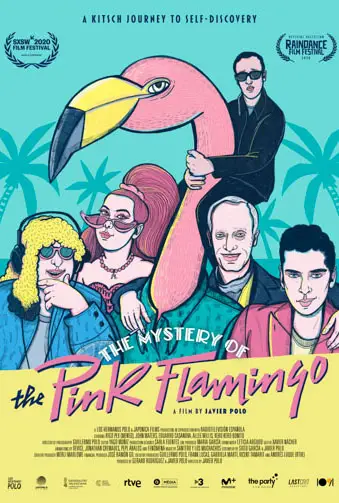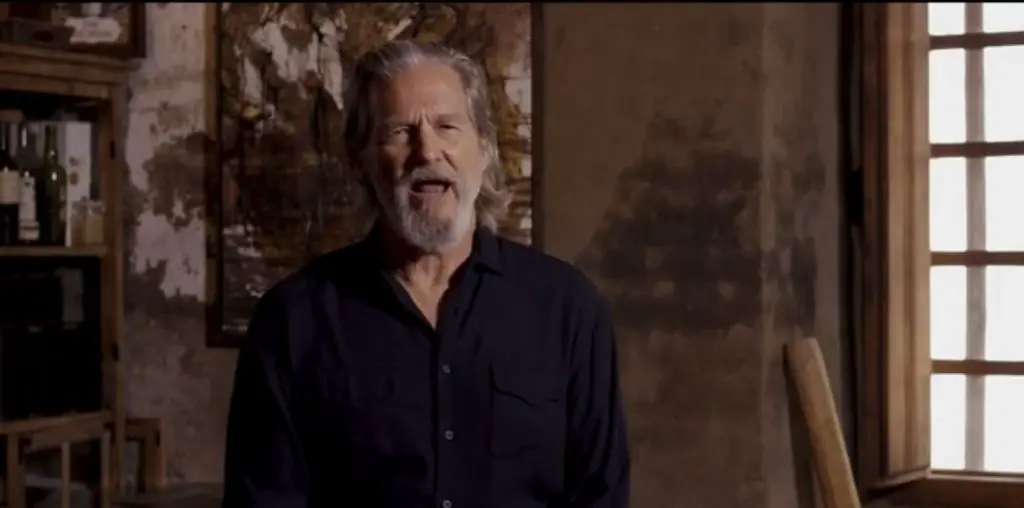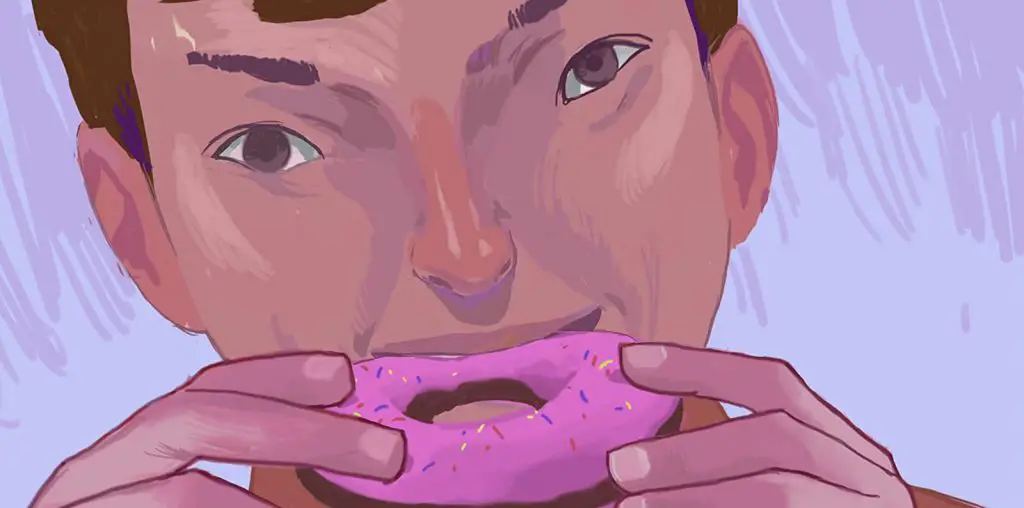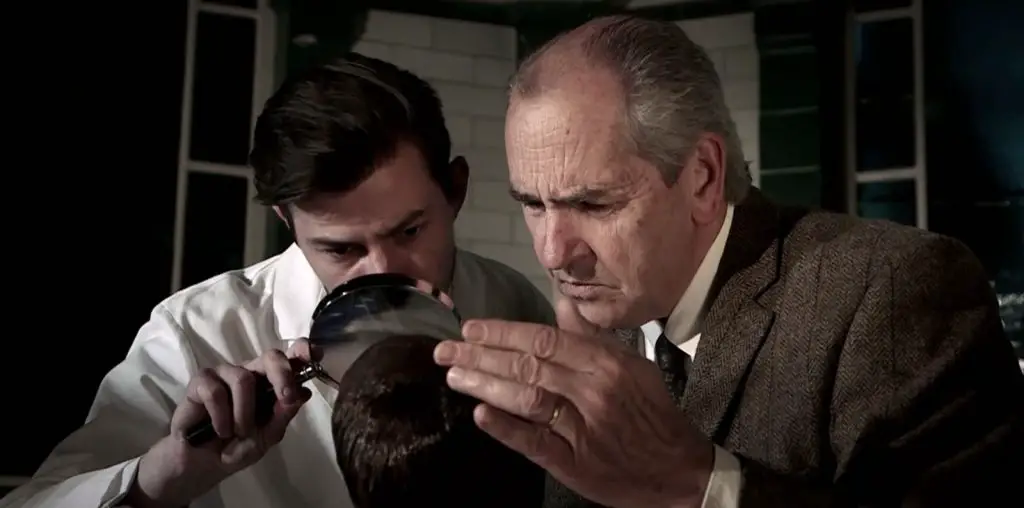
If haunted by the images of flamingos, most people would seek the aid of a trained psychiatrist or fish out their eyeballs with an ice cream scoop. But not Rigo Pex, the chief investigator of The Mystery of the Pink Flamingo. Rigo chooses to pursue the significance of the bird, seeing it as a signal. Whether it’s an internal projection—a psychological cry for help—or an external message from a notoriously ambiguous god, Rigo is determined to find out.
As Rigo follows this trail of pink feathers, he’s led through a chain gang of freaks, weirdos, and tasteless, kitsch-loving outcasts. These displaced people were not cast out by a society obsessed with labels, slogans, and unwavering group allegiances; they left of their own volition, with no animosity or bitterness—only a slight feeling of time wasted. It should come as a surprise to no one that this far-out journey leads Rigo to Florida and John Waters, the geographical and anatomical kings of sunshine sleaze.
It’s not clear whether or not The Mystery of the Pink Flamingo is a documentary until about thirty minutes in. Ten minutes after that, you’re unsure all over again. In the spirit of the great flamingo, the movie proudly presents itself as a careless piece of pop art, with no regard for the traditional “tasteful” elements of filmmaking. The elements that would cause a critic to scrunch his eyebrows with great purpose or laugh too loud so that her colleagues would be aware that she understood the joke (though it was subtle and a pointed, cultural observation, only recognizable as a joke to the most refined of tastes).

“…Rigo follows this trail of pink feathers, he’s led through a chain gang of freaks…”
Even the way Rigo interviews his subjects is strange. We’re all used to the normal framing, with the interviewer and interviewee looking just past the camera to the side. Here, the framing is straight-on, with both participants nearly holding eye-contact with the camera, which makes the interviews more intimate and revealing, but also just weird. Between interviews are these bastardizations of Discovery Channel interludes, in which Rigo walks around cities and sees hand-drawn flamingos or some other acid-flashback monstrosity. One of the most oddly enjoyable aspects of the film is the narrator, a gruff, masculine voice that begins as an objective observer but slowly takes Rigo’s side and rallies for his success.
Not everyone loves flamingos, however. At one point, Rigo interviews a man who has dedicated his life—or maybe just online life—to the hatred of flamingos and the phonies who pretend to like them. His position is simple: some people make the conscious decision to be weird, to align themselves under a common freak flag, which defeats the purpose of being a weirdo. He’s correct, and the movie, to its great success, doesn’t come off this way. It lives up to the flamingo in its aesthetics-minded mentality and freedom of movement. It’s not as vulgar and offensive as it could have been, but you can’t have everything. The toy collection of Allee Willis (pop songwriter of yesteryear) makes up for it a little bit, especially the interactive Michael Jackson figure.
The word “tasteless” is used a lot in The Mystery of the Pink Flamingo and once in this review, but it’s not accurate. It insinuates the lack of a skill, rather than the apathy for participating in the mainstream—unless you’re pissing in it, of course. Even now, Microsoft Word is informing me that “pissing” might be “offensive to your reader.” Would John Waters care? Would Florida care? Would a flamingo care? The Mystery of the Pink Flamingo doesn’t care. It’s jolly, childlike in a good way, and unusual where it counts. It’s a pop-up book that should be prominently displayed and never read.

"…lives up to the flamingo in its aesthetics-minded mentality and freedom of movement."


